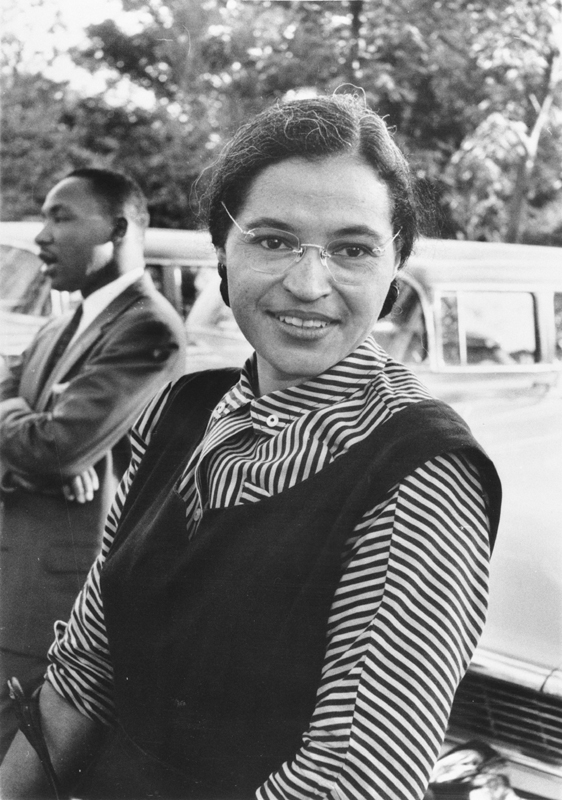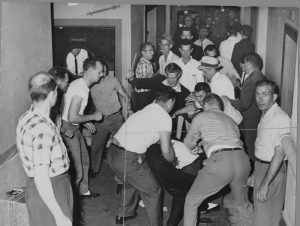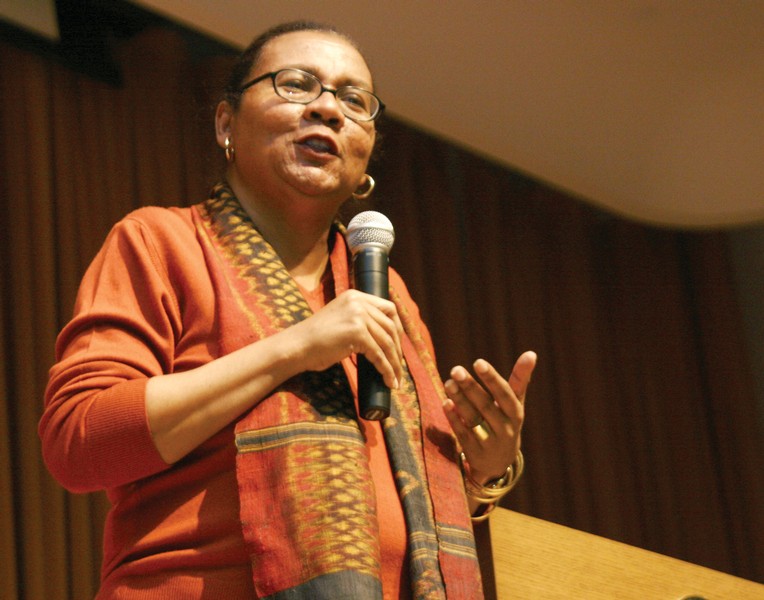28 Early to Late 20th Century Feminist Movements
Social movements are not static entities; they change according to movement gains or losses, and these gains or losses are often quite dependent on the political and social contexts they take place within. Following women’s suffrage in 1920, feminist activists channeled their energy into institutionalized legal and political channels for effecting changes in labor laws and attacking discrimination against women in the workplace. The Women’s Bureau—a federal agency created to craft policy according to women workers’ needs—was established in 1920, and the YWCA, the American Association of University Women (AAUW), and the National Federation of Business and Professional Women (BPW) lobbied government officials to pass legislation that would legally prohibit discrimination against women in the workplace.
These organizations, however, did not necessarily agree on what equality looked like and how that would be achieved. For example, the BPW supported the Equal Rights Amendment (ERA), which they argued would effectively end employment discrimination against women. Meanwhile, the Women’s Bureau and the YWCA opposed the ERA, arguing that it would damage the gains that organized labor had made already. The disagreement clearly brought into relief the competing agendas of defining working women first and foremost as women (who are also workers), versus defining working women first and foremost as workers (who are also women). Nearly a century after suffrage, the ERA has yet to be passed, and debate about its desirability even within the feminist movement continues.
While millions of women were already working in the United States at the beginning of World War II, labor shortages during World War II allowed millions of women to move into higher-paying factory jobs that had previously been occupied by men. Simultaneously, nearly 125,000 African American men fought in segregated units in World War II, often being sent on the front guard of the most dangerous missions (Zinn 2003). Japanese Americans whose families were interned also fought in the segregated units that had the war’s highest casualty rates (Odo 2017; Takaki 2001). Following the end of the war, both the women who had worked in high-paying jobs in factories and the African American men who had fought in the war returned to a society that was still deeply segregated, and they were expected to return to their previous subordinate positions. Despite the conservative political climate of the 1950s, civil rights organizers began to challenge both the de jure segregation of Jim Crow laws and the de facto segregation experienced by African Americans on a daily basis. The landmark Brown v. Board of Education ruling of 1954, which made “separate but equal” educational facilities illegal, provided an essential legal basis for activism against the institutionalized racism of Jim Crow laws. Eventually, the Black Freedom Movement, also known now as the civil rights movement would fundamentally change US society and inspire the second wave feminist movement and the radical political movements of the New Left (e.g., gay liberationism, black nationalism, socialist and anarchist activism, the environmentalist movement) in the late 1960s.
Although the stories and lives of the leaders of the civil rights movement are centered in popular representations, this grassroots mass movement was composed of working class African American men and women, white and African American students, and clergy that utilized the tactics of non-violent direct action (e.g., sit-ins, marches, and vigils) to demand full legal equality for African Americans in US society. For example, Rosa Parks—famous for refusing to give up her seat at the front of a Montgomery bus to a white passenger in December, 1955 and beginning the Montgomery Bus Boycott—was not acting as an isolated, frustrated woman when she refused to give up her seat at the front of the bus (as the typical narrative goes). According to feminist historians Ellen Debois and Lynn Dumenil (2005), Parks “had been active in the local NAACP for fifteen years, and her decision to make this stand against segregation was part of a lifelong commitment to racial justice. For some time NAACP leaders had wanted to find a good test case to challenge Montgomery’s bus segregation in courts” (Debois and Dumenil, 2005: 576). Furthermore, the bus boycott that ensued after Parks’ arrest and lasted for 381 days, until its success, was an organized political action involving both working-class African American and white women activists. The working-class Black women who relied on public transportation to go to their jobs as domestic servants in white households refused to use the bus system, and either walked to work or relied on rides to work from a carpool organized by women activists. Furthermore, the Women’s Political Caucus of Montgomery distributed fliers promoting the boycott and had provided the groundwork and planning to execute the boycott before it began.

Additionally, the sit-in movement was sparked by the Greensboro sit-ins, when four African American students in Greensboro, North Carolina, sat at and refused to leave a segregated lunch counter at a Woolworth’s store in February of 1960. The number of students participating in the sit-ins increased as the days and weeks went on, and the sit-ins began to receive national media attention. Networks of student activists began sharing the successes of the tactic of the nonviolent sit-in, and began doing sit-ins in their own cities and towns around the country throughout the early 1960s.

Importantly, the sit-in movement led to the formation of the Student Non-Violent Coordinating Committee (SNCC), initiated by Ella Baker shortly after the first sit-in strikes in Greensboro. The student activists of SNCC took part in the Freedom Rides of 1961, with African American and white men and women participants, and sought to challenge the Jim Crow laws of the south, which the Interstate Commerce Commission had ruled to be unconstitutional. The freedom riders experienced brutal mob violence in Birmingham and were jailed, but the Congress of Racial Equality (CORE) and SNCC kept sending riders to fill the jails of Birmingham. SNCC also participated in Freedom Summer in 1964, which was a campaign that brought mostly white students from the north down to the south to support the work of Black southern civil rights activists for voting rights for African Americans. Once again, Freedom Summer activists faced mob violence, but succeeded in bringing national attention to southern states’ foot-dragging in terms of allowing African Americans the legal rights they had won through activism and grassroots organizing.

SNCC’s non-hierarchical structure gave women chances to participate in the civil rights movement in ways previously blocked to them. However, the deeply embedded sexism of the surrounding culture still seeped into civil rights organizations, including SNCC. Although women played pivotal roles as organizers and activists throughout the civil rights movement, men occupied the majority of formal leadership roles in the Southern Christian Leadership Council (SCLC), the NAACP, and CORE. Working with SNCC, Black women activists such as Fannie Lou Hamer and Diane Nash became noted activists and leaders within the civil rights movement in the early 1960s. Despite this, women within SNCC were often expected to do “women’s work” (i.e., housework and secretarial work). White women SNCC activists Casey Hayden and Mary King critiqued this reproduction of gendered roles within the movement and called for dialogue about sexism within the civil rights movement in a memo that circulated through SNCC in 1965, titled “Sex and Caste: A Kind of Memo.” The memo became an influential document for the birth of the second wave feminist movement, a movement focused generally on fighting patriarchal structures of power, and specifically on combating occupational sex segregation in employment and fighting for reproductive rights for women. However, this was not the only source of second wave feminism, and white women were not the only women spearheading feminist movements. As historian Becky Thompson (2002) argues, in the mid and late 1960s, Latina women, African American women, and Asian American women were developing multiracial feminist organizations that would become important players within the U.S. second wave feminist movement.
In many ways, the second wave feminist movement was influenced and facilitated by the activist tools provided by the civil rights movement. Drawing on the stories of women who participated in the civil rights movement, historians Ellen Debois and Lynn Dumenil (2005) argue that women’s participation in the civil rights movement allowed them to challenge gender norms that held that women belonged in the private sphere, and not in politics or activism. Not only did many women who were involved in the civil rights movement become activists in the second wave feminist movement, they also employed tactics that the civil rights movement had used, including marches and non-violent direct action. Additionally, the Civil Rights Act of 1964—a major legal victory for the civil rights movement—not only prohibited employment discrimination based on race, but Title VII of the Act also prohibited sex discrimination. When the Equal Employment Opportunity Commission (EEOC)—the federal agency created to enforce Title VII—largely ignored women’s complaints of employment discrimination, 15 women and one man organized to form the National Organization of Women (NOW), which was modeled after the NAACP. NOW focused its attention and organizing on passage of the Equal Rights Amendment (ERA), fighting sex discrimination in education, and defending Roe v. Wade—the Supreme Court decision of 1973 that struck down state laws that prohibited abortion within the first three months of pregnancy.

Although the second wave feminist movement challenged gendered inequalities and brought women’s issues to the forefront of national politics in the late 1960s and 1970s, the movement also reproduced race and sex inequalities. Black women writers and activists such as Alice Walker, bell hooks, and Patricia Hill Collins developed Black feminist thought as a critique of the ways in which second wave feminists often ignored racism and class oppression and how they uniquely impact women and men of color and working-class people. One of the first formal Black feminist organizations was the Combahee River Collective, formed in 1974. Black feminist bell hooks (1984) argued that feminism cannot just be a fight to make women equal with men, because such a fight does not acknowledge that all men are not equal in a capitalist, racist, and homophobic society. Thus, hooks and other Black feminists argued that sexism cannot be separated from racism, classism and homophobia, and that these systems of domination overlap and reinforce each other. Therefore, she argued, you cannot fight sexism without fighting racism, classism, and homophobia. Importantly, black feminism argues that an intersectional perspective that makes visible and critiques multiple sources of oppression and inequality also inspires coalitional activism that brings people together across race, class, gender, and sexual identity lines.

